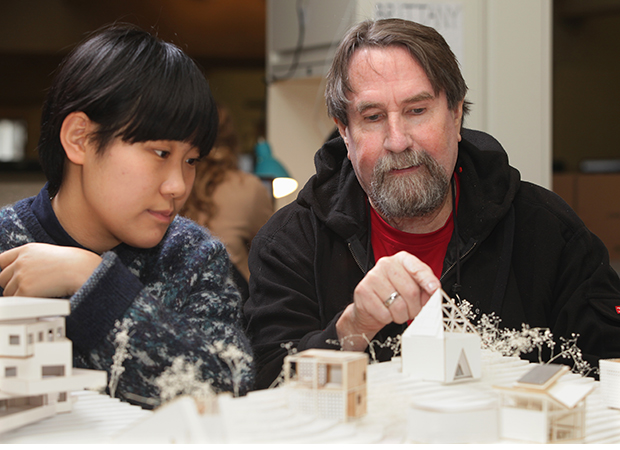Tabb co-authors book analyzing history of ‘green’ architecture

Senem Deviren
“There hopefully will no longer be the need for this greening process in the future, as architecture will naturally embody and fully actualize effective green principles."
-- the authors
A new book that provides readers with a history and analysis of “green” architecture from 1960-2010 has been authored by Philip Tabb, professor of architecture at Texas A&M, and Senem Deviren, assistant professor of landscape architecture and urban design at Istanbul Technical University.
[ ] (http://www.barnesandnoble.com/w/the-greening-of-architecture-phillip-james-tabb/1116978430?ean=9781409447399) The book, “ [The Greening of Architecture] (http://www.barnesandnoble.com/w/the-greening-of-architecture-phillip-james-tabb/1116978430?ean=9781409447399) ,” begins with the dawn of environmental awareness in the early 1960s, voiced by author Rachel Carson in “ [Silent Spring] (http://www.amazon.com/Silent-Spring-Rachel-Carson/dp/0618249060) ” and architect and theorist Buckminster Fuller and the subsequent integration of “green” technology and design, which lowered negative environmental effects caused by buildings, urban designs and settlements. Tabb and Deviren detail many examples of this integration at various locations throughout the world.
The authors also describe how significant world events, climate change, environmental theories, movements in architecture, technological innovations and landmark works in architecture and planning all affected the “greening” of architecture.
In the future, the authors conclude, “green” architecture will be informed by incremental changes caused by dynamic interactions with immediate surrounding environments, social equity and response to the diversity of needs, affordable applications and connectivity at all scales of human activity.
“And finally,” they write, “there hopefully will no longer be the need for this greening process in the future, as architecture will naturally embody and fully actualize effective green principles.”
Tabb, who joined the Texas A&M faculty in 2001, is the Liz and Nelson Mitchell Professor of Residential Design. He headed the [Department of Architecture] (http://dept.arch.tamu.edu/) from 2001 to 2005.
He is the [master plan architect] (http://archcomm.arch.tamu.edu/archive/news/spring2011/stories/Serenbe_ARarticle.html) for Serenbe community near Atlanta and a planning consultant for the nearby [Millican Reserve Land Conservancy] (http://millicanreserve.org/our-collaborators/) and the [Summit Series] (http://www.summit.co/series/) community in Utah.
Tabb, who also focuses on sacred building and place typologies, is a board member of the [Forum for Architecture, Culture and Spirituality] (http://www.acsforum.org/index.htm) , an international scholarly environment established in 2007 to support architectural and interdisciplinary scholarship, research, practice, and education on the significance, experience and meaning of the built environment.
Tags
- academics
- architecture
- environment
- feature
- history
- interdisciplinary
- partnerships
- sustainability
- theory-philosophy
Related Posts
Noted preservationist named interim head of architecture dept.

Students creating high-density plans for Texas A&M

New CHUD director shares vision for center's expansion

Light pipe tests under way at daylighting lab
Follow Us
Facebook Twitter Vimeo Youtube Flickr RSS
Recent Posts

Planning prof heads study of disaster housing aid

A message from the dean

Former student remembered as expert planner

Leading educator named new head of Architecture Dept.





_thumbnail_small.png)
